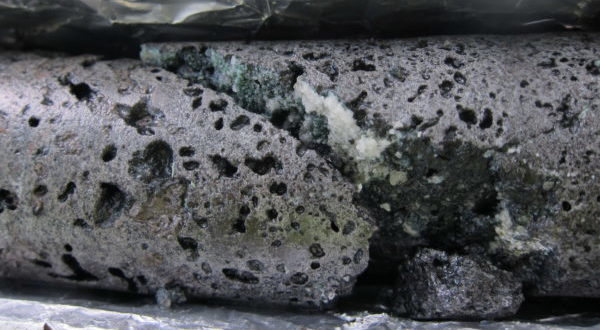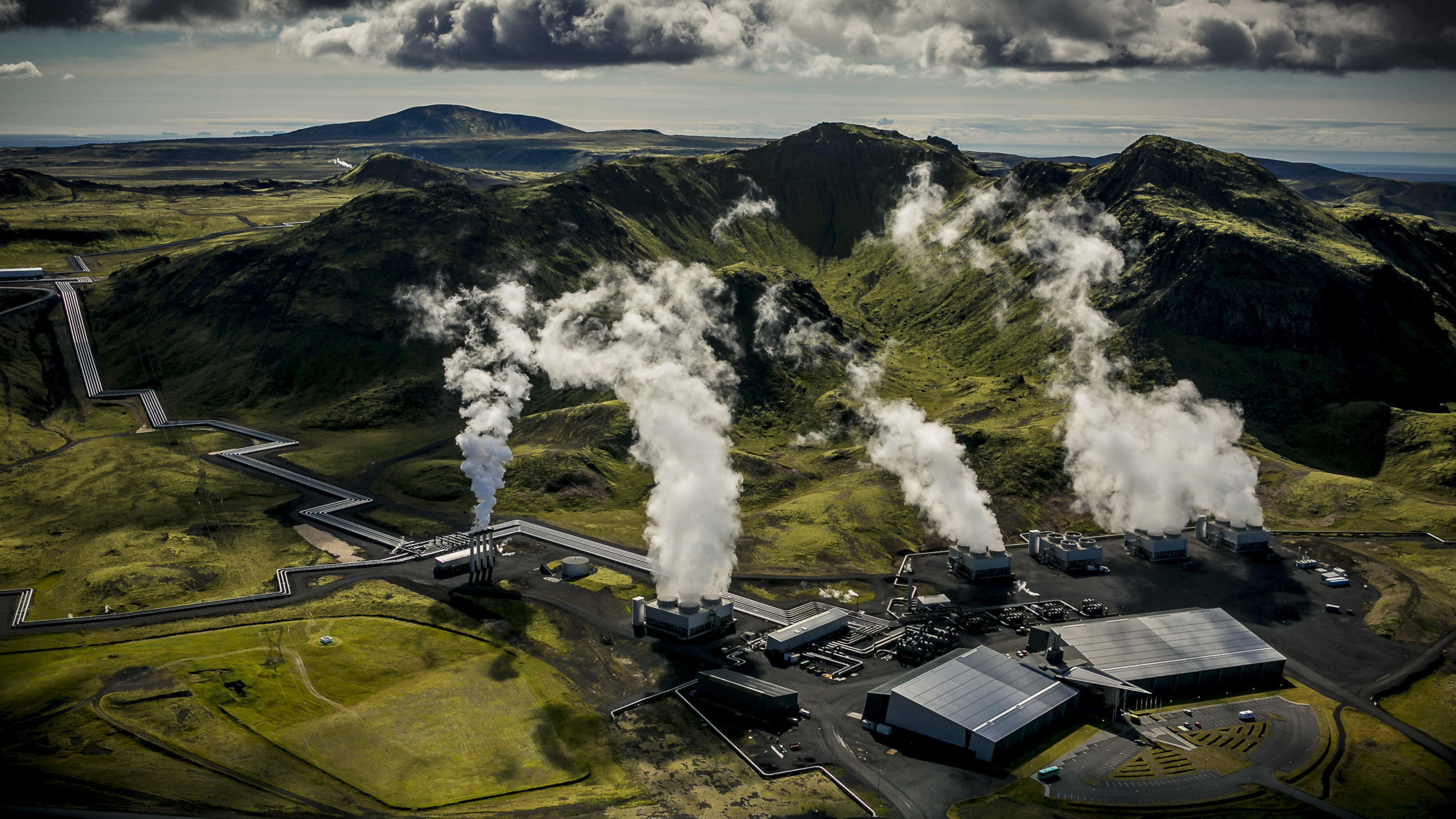Turning Carbon Dioxide Into Stone
Thousands of feet below the Hellisheidi Geothermal Power Plant outside of Reykjavik, Iceland, a carbon dioxide (CO2) and water mixture is injected into the ground. Reacting with minerals in the plentiful basalt rock, the CO2 solidifies into crystals known as carbonates — essentially turning it into stone.

A core sample of basalt, with carbonate mineralization occurring in the fracture. (Visual by Annette K. Mortensen/University of Southampton)
Writing in the journal Science, an international team of researchers suggested that this form of what’s known as carbon capture and storage (sometimes called carbon capture and sequestration, or CSS) is not only effective, but fast. Where previous studies had estimated that the process could take anywhere from 10 to 1,000 years, in this study, 95 percent of the CO2 had solidified in just two years.
The Hellisheidi plant generates 40,000 tons of CO2 annually, but with this technology — dubbed CarbFix — the project team hopes to eventually capture all of that planet-warming gas before it is emitted into the atmosphere and store it permanently underground.
Last year, the facility injected 5,000 tons of CO2. This year, they plan to double that.
Of course, that’s just a tiny fraction of the 3.5 million tons of CO2 generated by a typical coal plant, and an even smaller portion of the roughly 80 gigatons of CO2 — now at the highest atmospheric concentrations in at least 400,000 years — that many experts say would need to be captured and stored in order to keep global average temperatures from more than 2-degrees Celsius above pre-industrial levels. That’s the goal that nations agreed to at international climate talks in Paris last year.
But Sigurdur Gislason, a geochemist at the University of Iceland and co-author of the new paper, suggested the technology has the potential to be carried out on a much larger scale.
“Some people are saying, ‘Okay, we just have to completely abandon fossil fuels, so we don’t need carbon capture and storage,’” said Gislason. “Well theoretically you could do that, but we will need our metals in the future and just creating metal, out of iron ore for example, means making a lot of carbon dioxide. So you would at least want industry to capture CO2 even if you switched completely to renewable energy.”
Sequestering carbon dioxide underground is not a new idea. Many CCS projects, like the Petra Nova facility in Texas, and the Sleipner project in the North Sea, have been heralded as having the potential to help alleviate climate change by storing captured CO2 in oilfield rock formations or aquifers.
Mineralizing CO2 in basalt rock isn’t new either. Another pilot project in Wallula, Washington also tried injecting CO2 into the Columbia River Basalt formation.
But these carbon storage techniques haven’t become mainstream — in large part due to cost.
Martin Stute, another co-author of the study and professor of environmental science at Columbia University’s Lamont-Doherty Earth Observatory, acknowledges that it’s very expensive (each new injection well costing roughly $1 million to drill). Stute also admits that piggybacking on the Iceland geothermal plant’s existing infrastructure to test out their technology made the project all the more feasible.
Still, he said, “The technology that we’re applying is really not restricted to geothermal power plants.” Any power plant operating above a basalt formation would make a good candidate.
But the availability of appropriate geology is another limiting factor, given that only 10 percent of continental rocks are basalt. Offshore basalt formations, on the other hand, could hold more promise for CO2 mineralization technology.
“The number of locations that satisfy these conditions is very limited,” said Sally Benson, director of the Global Climate and Energy Project, Stanford University, in an email. “To the extent that a large emission source is located in a region with a suitable basalt formation and very large volumes of water are available, this method could be used to sequester significant quantities of CO2,” wrote Benson.
“Nonetheless, these are early days for CCS, and this is a good step forward.”










